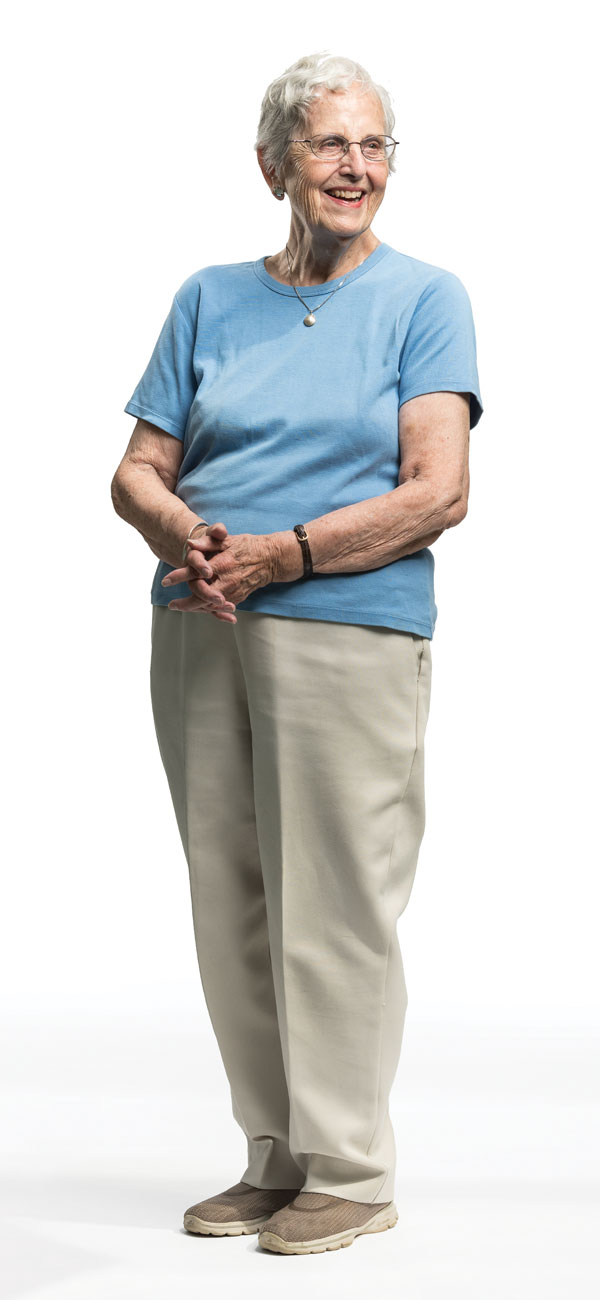In Review
 (Photo: J. Adam Fenster)
(Photo: J. Adam Fenster)About the Docent Program
Meet More Docents
Celebrating its 50th anniversary this year, the Docent Program at the Memorial Art Gallery puts volunteer guides through extensive training, education, and research to help museum visitors view and react to works of art more carefully and critically. There are about 70 active docents today and another group, approximately half that size, who participate in the program’s activities but no longer give tours.
You’re 88 now and have been a docent for 56 years. That’s really impressive, by the way. What was life like when you started giving tours?
It was an interesting time. What a pleasure something like this was for somebody who was raising kids at home. I’d switch babysitting [duties] with our neighbor when she went off to volunteer someplace. That was the way it was in the 1950s.
Where does your interest in art come from?
I grew up with art in my house—there were always a couple of paintings—even though I was a middle-class kid. When my parents died, I went to live with my father’s employer and they had some New England art, some beautiful watercolors. Then in college I took art history classes. It went right through my chest when we got to something that was so seminal that I hadn’t thought about before.
How do you help people appreciate a work of art?
I tell them, “You always know more than you think because you’ve got your eyes.” I pick something they can recognize easily, then start with simple questions like, “What do you notice first?” You have to help them digest something before you get to the next level. Perspective is very important in a landscape painting, so I tell them that where they stand is going to make a difference.
Art is highly subjective, and some pieces are more accessible than others. How do you approach the ones that are more complicated to interpret?
Even in an abstract painting there can be a small thing that stands out. It might not be as big as my fingernail, but your eye may go to a little spark of red. If you stand and look at a painting, if you really started looking and thinking, five minutes is not enough. But usually you don’t have that kind of luxury.
How do you judge how long to stay at each painting?
It’s hard for me to do that because I don’t judge people easily right away. In the beginning it was really laid out what we had to do, but when I start out now, I do have to quickly size them up.
Do the museum’s visitors ever teach you anything?
Occasionally they know more than I do. They give me an insight and I think, “God, that’s great. I think I should use that.” I can always learn, so people can tell me anything. They can even tell me if they don’t like what I’m doing. I’m very conciliatory.
Given how much time you spend researching certain pieces of work, has your relationship with art gotten deeper and more meaningful over time?
There have been some pieces that have made my heart thump. Once in a while you know you’ve seen something that was really right, and that’s a thrill. It goes right through you.
Does that happen most often while on the clock or on your own time?
A lot of times you’re tied to a schedule, asking questions and giving basic facts. But when you’re on your own, wandering through the gallery, you can discover something. It could be a flick of paint, or a particular brush stroke. Sometimes there’s just a label next to a painting and no other explanation, and you’re on your own, and a little light bulb goes on.
You know the Memorial Art Gallery inside and out. Name one not-to-be-missed spot.
The upstairs, where the Fountain Court is. Architecturally, it’s a gorgeous neoclassical space. Structurally, it’s the biggest part of the gallery, and other galleries spin off it by historical period.
Do you ever think about how you’d be represented in a piece of art?
I like contemporary art, but I wouldn’t want to end up fractured, so I wouldn’t want to be in a Picasso, though it would be interesting. He probably would have my mouth wide open or my mouth floating so free-form that you could hardly deconstruct it.
Any final thoughts?
The more you look, the more you learn, and the more you learn, the more you will look. That’s how I feel. I don’t care if it’s grass.

